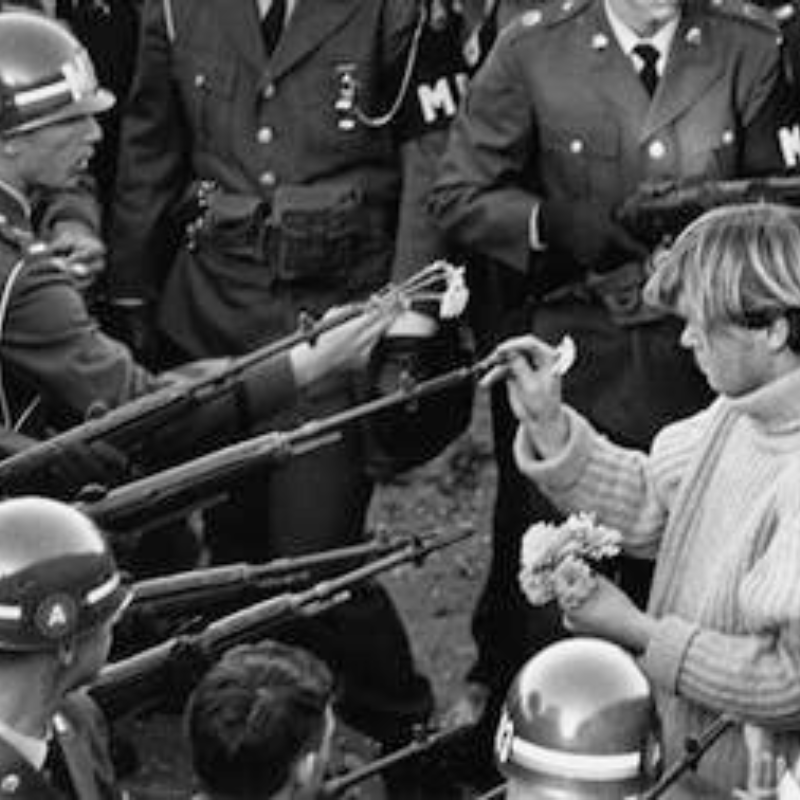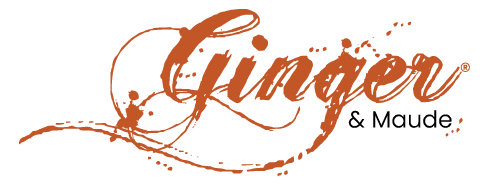 Photo Credit: Bernie Boston, 1967, Vietnam War Protest
Photo Credit: Bernie Boston, 1967, Vietnam War Protest
Did you know May Day, or International Labor Day, has its roots in the United States? May 1, 1886 marked the starting date of a country-wide strike against workdays lasting longer than 8 hours. On May 4, in what would come to be known as the Haymarket Affair, a meeting to protest the police brutality of the day before in Chicago became even more violent when an unidentified individual threw a bomb. In the end, several workers and police alike were killed. Eight men were charged with attempted manslaughter, though no evidence was offered to link them to the bomb. To honor the workers in Chicago and “Haymarket Martyrs,” in 1889, the International Socialist Conference named May Day a labor holiday, and in 1890, 300,000 people gathered to protest in London at a May Day rally. Worldwide, International Labor Day is officially recognized in 66 countries and unofficially in many more.
While the United States does not count itself as one of those 66 (our Labor Day happens in September, and May Day was actually declared “Law Day” by Eisenhower in an attempt to further remove its link to the Labor Movement), it is still widely celebrated, with protests occurring nationwide for labor rights as well as many other human rights issues.
May Day is a day meant to celebrate coming together to fight for what is right; the more people showing up, the stronger that fight becomes. This is true after May Day as well. While the day of protest may be over, your voice still matters in the fight for what is important to you.
Here are a few of our main ways to continue taking action:
—Donate. If you have the means, even a small donation builds up to go a long way. Donating to an organization that is working towards a cause you believe in is a great (and needed!) way to help sustain long-term action for change.
—Volunteer. After you’ve made your donation, why not peruse the organization’s “Volunteer” page to find opportunities fitting your unique skill set? This allows you to take tangible positive action toward the rights you are working to secure and it also helps you…
—Connect with the community and your peers. There is power in numbers. Making connections and working with our community broadens our reach and increases the impact we are able to make. It also strengthens our community by building a network of folks working together for a mutual cause.
—Listen and learn. If you are not directly a part of the group whose rights you are fighting for, make it a priority to listen and learn from those impacted by the decisions (and lack thereof) being made. This does NOT mean seeking out members of that group and forcing them to be your teacher and emotional support. Attend other meetings and rallies; read; listen to TedTalks and/or podcasts; examine your own beliefs. Find ways to educate (without centering) yourself to figure out how you can best support and show up, and also to help you…
—Spread the word. Talk to others about what you are working towards and why it is important. Whether in person or on social media, the more people who understand the importance, the more people to join in taking action.
There are many paths you can take; whichever ones you decide on, we hope you remember that change is rarely accomplished in a day. The 1886 May Day strike for an 8-hour workday lasted at least four days, but the fight began well before that (one of the first documented strikes occurring in the late 1700s!), and while victories were achieved along the way, it wasn’t until 1940 that congress passed the Fair Labor Standards Act, limiting the workweek to 40 hours (although, let’s be real, there are a TON of folks still made to work way more than this). So keep working at it—making the world a better place is always worth the time. We see everything you’re doing.
Sources:
https://www.encyclopedia.com/history/encyclopedias-almanacs-transcripts-and-maps/eight-hour-day-movement
https://www.history.com/topics/holidays/history-of-may-day
https://www.npr.org/2022/04/30/1095729592/what-is-may-day-history
